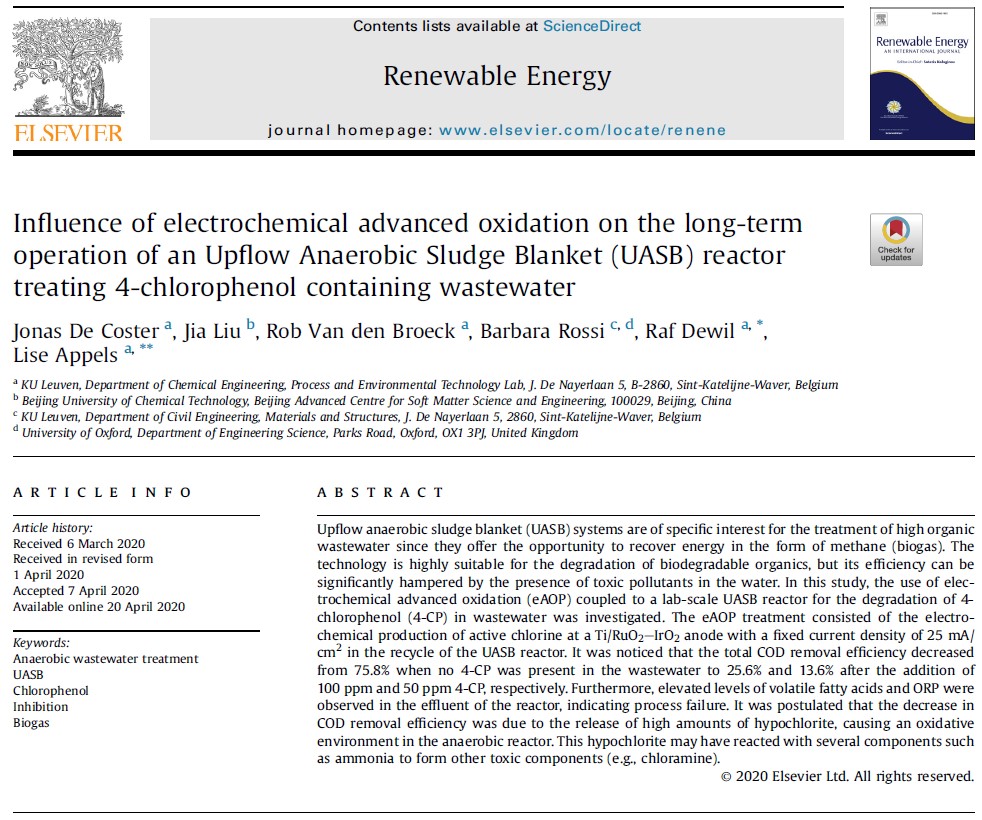Upflow anaerobic sludge blanket (UASB) systems are of specific interest for the treatment of high organic wastewater since they offer the opportunity to recover energy in the form of methane (biogas). The technology is highly suitable for the degradation of biodegradable organics, but its efficiency can be significantly hampered by the presence of toxic pollutants in the water. In this study, the use of elec- trochemical advanced oxidation (eAOP) coupled to a lab-scale UASB reactor for the degradation of 4- chlorophenol (4-CP) in wastewater was investigated. The eAOP treatment consisted of the electro- chemical production of active chlorine at a Ti/RuO2-IrO2 anode with a fixed current density of 25 mA/ cm2 in the recycle of the UASB reactor. It was noticed that the total COD removal efficiency decreased from 75.8% when no 4-CP was present in the wastewater to 25.6% and 13.6% after the addition of 100 ppm and 50 ppm 4-CP, respectively. Furthermore, elevated levels of volatile fatty acids and ORP were observed in the effluent of the reactor, indicating process failure. It was postulated that the decrease in COD removal efficiency was due to the release of high amounts of hypochlorite, causing an oxidative environment in the anaerobic reactor. This hypochlorite may have reacted with several components such as ammonia to form other toxic components (e.g., chloramine).
Reference to the paper: Jonas De Coster, Jia Liu, Rob Van den Broeck, Barbara Rossi, Raf Dewil, Lise Appels (2020). Renewable Energy 152, 683-692. https://doi.org/10.1016/j.renene.2020.04.037
Acknowledgements: The authors would like to thank the Industrial Research Council of KU Leuven e Knowledge Platform AOPtimise (KP/10/006), and the Research Council of KU Leuven (OT/13/063) for the financial support.

